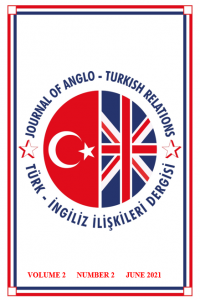Bein, Amit. Kemalist Turkey and the Middle East: International Relations in the Interwar Period, (New York: Cambridge University Press, 2020).
Öz
Almost every student of the history of the Middle East has read David Fromkin’s 1989 book A Peace to End All Peace: The Fall of the Ottoman Empire and the Creation of the Modern Middle East. Fromkin’s view about the new Republic of Turkey at the end of WWI reflects the common thinking among many historians and political scientists: with the declaration of the Republic (1923) and the drawing of the new borders, Turkey distanced itself from the Middle East and moved to a Western-oriented and passive foreign policy stand. Amit Bein sets out to prove that on the contrary the new Republic was very much involved in Middle East politics and in the reshaping of the post-Ottoman borders. Using primary sources, including archives and newspapers in Turkish, Arabic, English and other languages, with maps and photographs, Bein gives the readers an almost day-to-day account of the Turkish foreign policy between two wars. However, the book is not only about post-Ottoman Turkey and its efforts to survive, to gain respect and independence, but it is also about the policies of the colonial powers and how deeply they were always involved in the Middle East even after WWII, and the fate of the minorities-the Kurds, the Armenians and the Assyrians.
Anahtar Kelimeler
Kaynakça
- Bein, Amit. Kemalist Turkey and the Middle East: International Relations in the Interwar Period, (New York: Cambridge University Press, 2020).
Bein, Amit. Kemalist Turkey and the Middle East: International Relations in the Interwar Period, (New York: Cambridge University Press, 2020).
Öz
Almost every student of the history of the Middle East has read David Fromkin’s 1989 book A Peace to End All Peace: The Fall of the Ottoman Empire and the Creation of the Modern Middle East. Fromkin’s view about the new Republic of Turkey at the end of WWI reflects the common thinking among many historians and political scientists: with the declaration of the Republic (1923) and the drawing of the new borders, Turkey distanced itself from the Middle East and moved to a Western-oriented and passive foreign policy stand. Amit Bein sets out to prove that on the contrary the new Republic was very much involved in Middle East politics and in the reshaping of the post-Ottoman borders. Using primary sources, including archives and newspapers in Turkish, Arabic, English and other languages, with maps and photographs, Bein gives the readers an almost day-to-day account of the Turkish foreign policy between two wars. However, the book is not only about post-Ottoman Turkey and its efforts to survive, to gain respect and independence, but it is also about the policies of the colonial powers and how deeply they were always involved in the Middle East even after WWII, and the fate of the minorities-the Kurds, the Armenians and the Assyrians.
Anahtar Kelimeler
Kaynakça
- Bein, Amit. Kemalist Turkey and the Middle East: International Relations in the Interwar Period, (New York: Cambridge University Press, 2020).
Ayrıntılar
| Birincil Dil | İngilizce |
|---|---|
| Konular | Uluslararası İlişkiler |
| Bölüm | Kitap İncelemeleri |
| Yazarlar | |
| Yayımlanma Tarihi | 20 Haziran 2021 |
| Gönderilme Tarihi | 17 Haziran 2021 |
| Kabul Tarihi | 17 Haziran 2021 |
| Yayımlandığı Sayı | Yıl 2021 Cilt: 2 Sayı: 2 |
4490jatr@gmail.com


